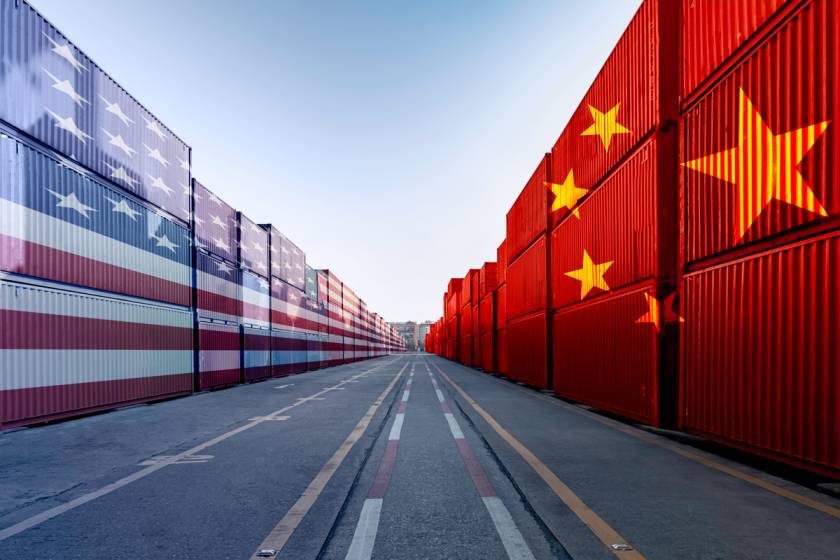US-China Ties & Its Impact on the Fashion Industry



The turbulent relationship between the US and China is no longer a secret, and how would it be? The conflict between these two powerful countries is not a recent occurrence but dates back to 2018. As a result of the ongoing war between the two countries, China Fashion and US Fashion, as well as many other industries, have suffered a lot. Yes, both countries have had equal problems. Now, do you think that this Cold War situation affected just the US and China? Isn’t the whole world paying for it too? The answer to this question is YES! Most luxury brands have been badly affected because their global supply chain is spread across international markets. When a barrier or restriction is imposed on the movement of goods, the whole model of demand and supply gets disrupted.
The intensity of this cold war intensified all the more with the US presidential elections in 2020. While fashion companies were already having a tough time because of the cold war, the pandemic outbreak only accelerated their suffering even more.
When we think from a customer/consumer point of view, the prices of whatever you are using right now that was made in China will automatically rise. Something as fancy as an iPhone is assembled in China, and something as small as a child’s battery toy is also manufactured in China. Hence, if there is a war situation and the import tariffs are increased, the world suffers. No matter how much we argue, the dependence on China for almost everything is difficult to break and replace.
When President Trump was elected in the United States, he campaigned to bring back jobs to the country and start manufacturing everything in the US, thereby boosting domestic industry and reducing the trade imbalance.
When Joe Biden came into power, he too did not change the trade policy that Trump had implemented. For once, Trump and Biden agreed on the same thing!
However, most economists feel that when commodities become more expensive as a result of trade wars, consumers bear the brunt of the increase.
What Is the Current Fashion Export Situation?
According to a report on Bloomberg, China’s annual exports to the United States are worth roughly $35 billion in clothes and $15 billion in footwear. The World Trade Organization says that China exported 36.4% of the world’s clothes in 2017.
When it comes to moving production, even switching factories may be a significant burden for businesses. Because not many nations can create bulk clothes in just 10 to 20 days, lead times will be affected. In today’s retail environment, getting a product to market quickly is critical.
How Is the Trade War Affecting the Fashion Industry?

Due to the additional tariffs, US fashion brands that buy their products from Chinese suppliers have been suffering. A trade war between the world’s two most significant economies, however, has global ramifications. For instance, due to the additional tariffs, Chinese fabric exports to the United States fell by 22% in 2019, whereas Vietnam fabric exports to the United States climbed by 9.6%. The fabric demand in the United States remained constant, and now more expensive Chinese supply was substituted.
Both sides of the fashion industry have little to gain from the current trade conflict. From 16 percent to 2 percent of its products sold in the US, Levis cut its Chinese manufacturing when tariffs began to rise. US apparel and footwear companies are highly dependent on the supply chain in China. They derive a significant portion of their income from the nation, while Chinese garment manufacturers export a substantial portion of their products to the US. A notable example is Nike, which generates 20% of its global sales in Greater China and produces 25% there.
China’s fashion industry, on the other hand, is more likely to concentrate on the needs of the people in their home country. As a result, the trade war has a more significant impact on US fashion players than on Chinese fashion players in the industry. However, despite the January agreement that decreased some duties, many remained, including footwear.
China is a major supplier of footwear, which makes it difficult for international brands to compete. The US shoe retailer Steve Madden, for example, still produces 85 percent of its products in China, despite the rise of domestic production. Chief Executive Officer Edward Rosenfeld said even if the brand drops this percentage, it is unlikely to fall below 60% shortly. The fashion sector is suffering and will continue to suffer as long as tensions between the two countries remain high. However, some actors in the business are suffering more than others.
Louis Vuitton, too, followed by Gucci and Hermes, lowered the price of their products in 2018 to curb the imports during the US-China cold war.
Conclusion
US government has been strict with maintaining trade relations with China, and that is one thing that hasn’t changed since 2018. However, it is also essential to understand that China is a vast economy, and the dependence of all the countries on it is not going away anytime soon.



















